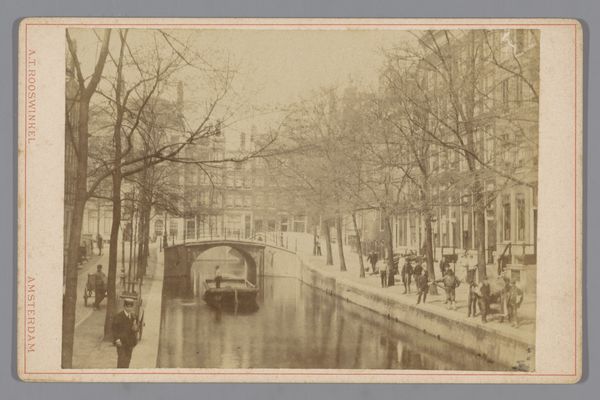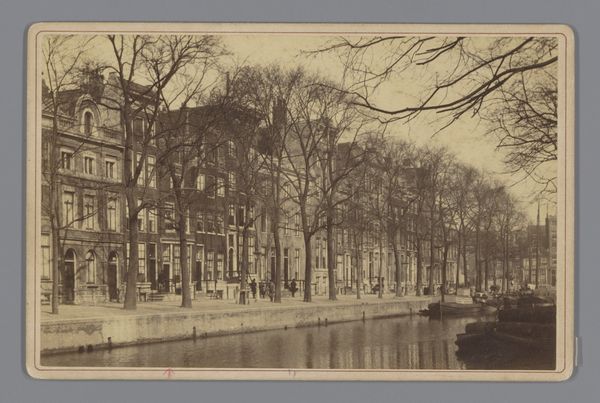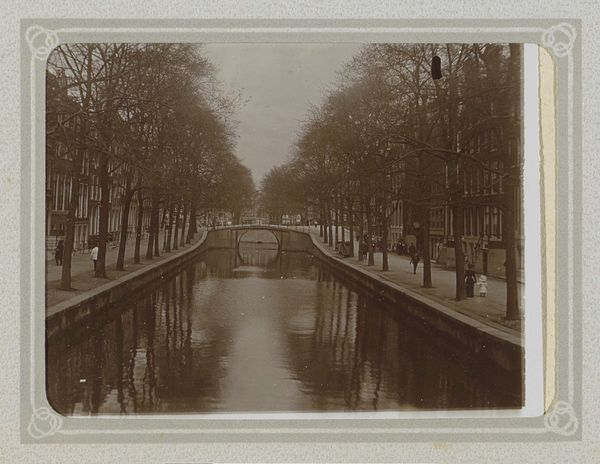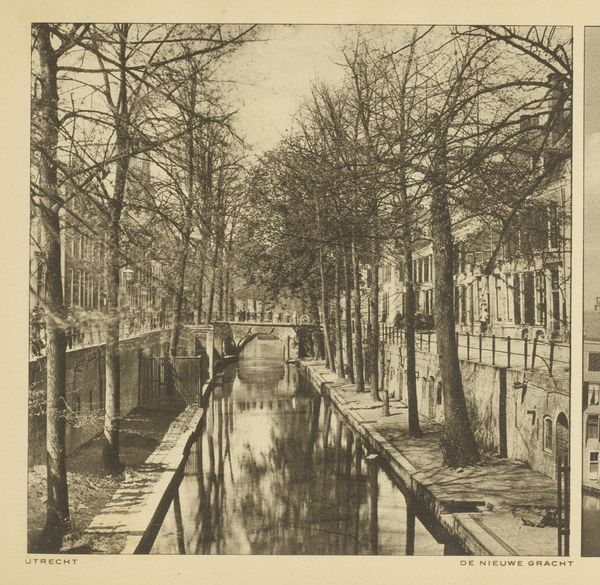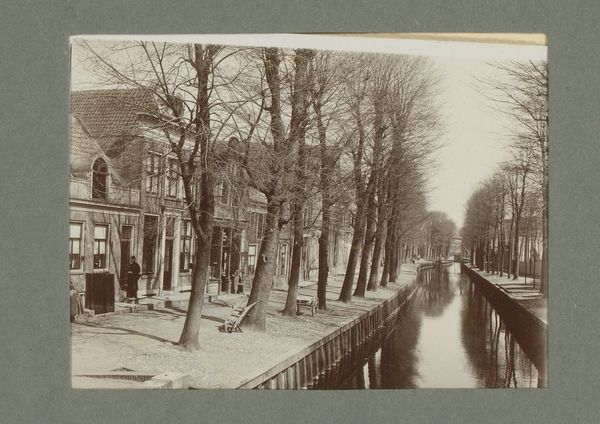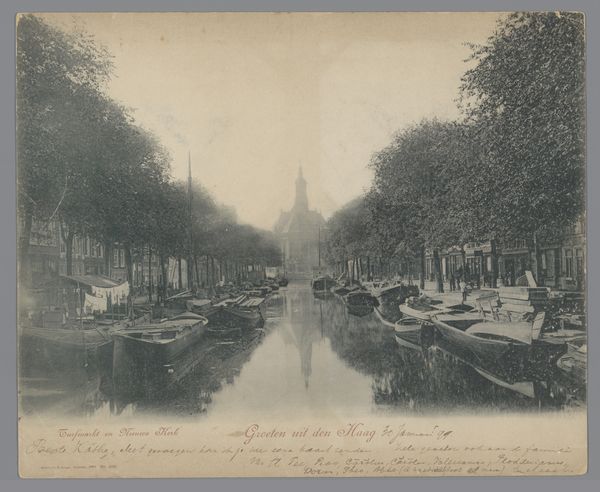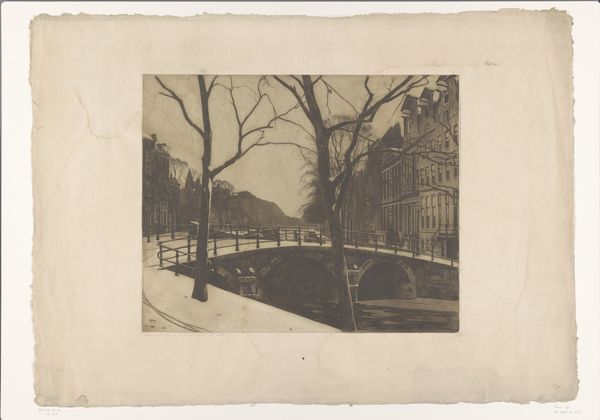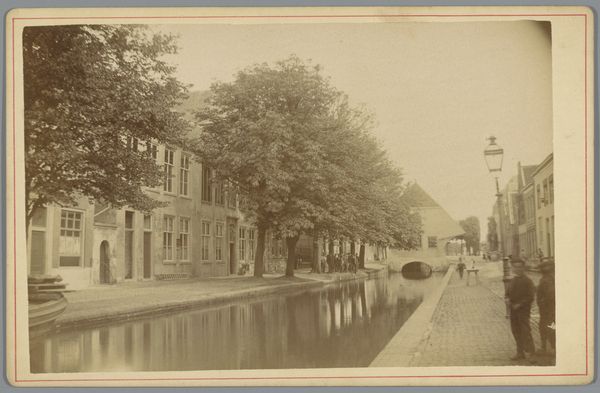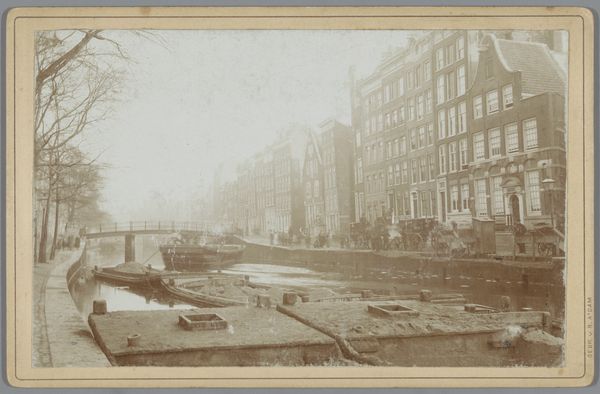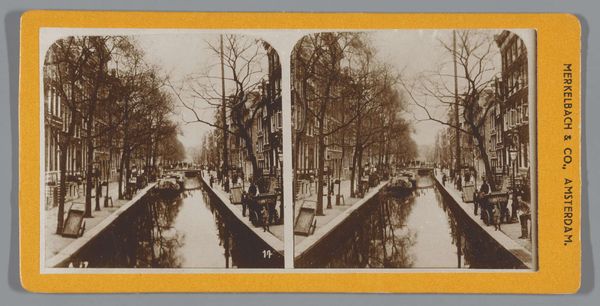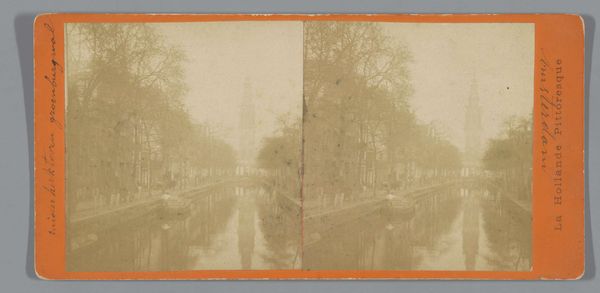
#
photo of handprinted image
#
aged paper
#
toned paper
#
water colours
#
parchment
#
coloured pencil
#
watercolour bleed
#
watercolour illustration
#
natural palette
#
watercolor
Dimensions: height 101 mm, width 134 mm
Copyright: Rijks Museum: Open Domain
Curator: This print, titled "Gezicht op de Oude Delft en de Oude Kerk in Delft," dates from sometime between 1860 and 1880. It is currently held at the Rijksmuseum, and it has been attributed to Henri de Louw. Editor: There's a certain melancholic stillness about this piece. The toned paper gives it a sepia wash that softens the edges and casts the whole scene in a wistful light. Curator: That melancholic quality might be tied to the socio-political environment of the period. Photography was still emerging, carrying associations of realism, so capturing urban environments was freighted with meanings about civic pride. Notice how the placement of the church emphasizes a historical narrative of order and steadfastness. Editor: Yes, the church rising like a pale ghost definitely commands attention, almost like a watchful ancestral spirit over the Oude Delft. But the canal itself, mirroring the sky and the buildings, introduces a deeper symbolism. Water often represents the unconscious or the passage of time... a constant, reflective presence. Curator: Absolutely. And the Oude Kerk, as an enduring institution, visually dominates, implying a certain social and cultural influence on daily life in Delft. The composition invites viewers to consider the power structures inherent in this seemingly tranquil scene. Editor: And the bare trees! Stark symbols of winter or perhaps the cyclical nature of life, standing guard on either side of the canal like silent sentinels, and the water shows not reflections of vibrant activity, but instead reinforces this introspective mood. Curator: Though photography served a growing tourist industry that wanted beautiful mementos of visited sites, prints like this were often commissioned by civic authorities who wanted visual evidence that captured the scale and substance of their cities. Editor: The entire vista creates a strong sense of place, even for those unfamiliar with Delft. One feels almost drawn into that quiet, reflective moment captured so long ago, as if stepping back in time. Curator: Indeed, it illustrates a deliberate projection of Delft onto the public consciousness, an exercise in placemaking, with the Church centered. Editor: It leaves me pondering the enduring symbols of place and how their emotional weight shifts across time. Curator: A subtle dance between imagery and cultural perception.
Comments
No comments
Be the first to comment and join the conversation on the ultimate creative platform.
